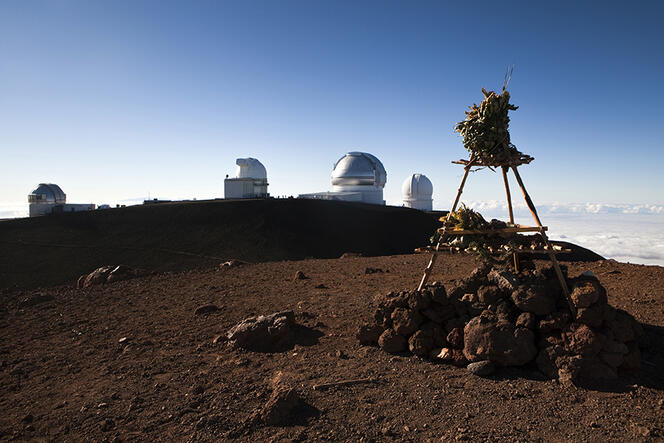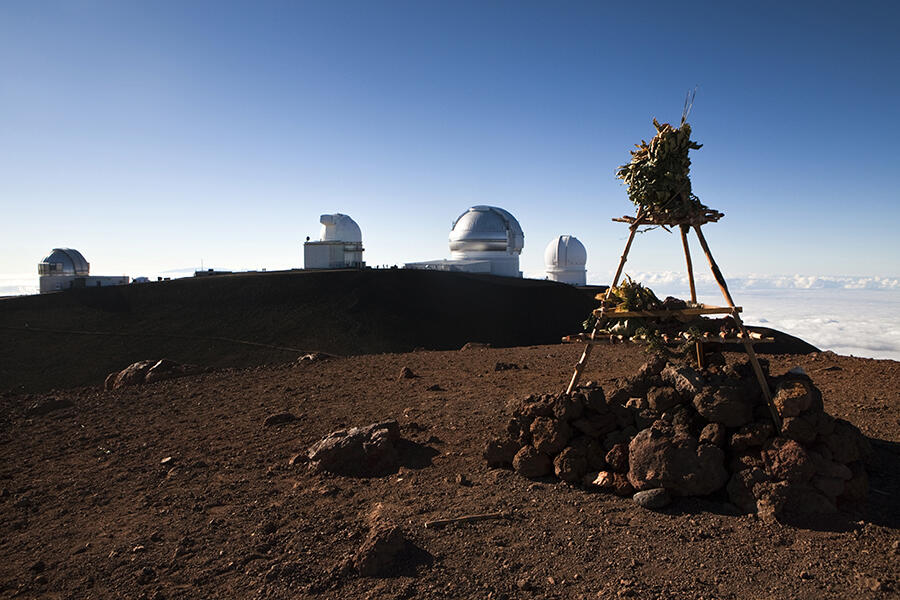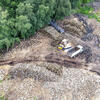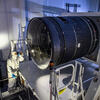You are here
Telescopes face down-to-earth challenges

Your current research focuses on the social and environmental issues surrounding astronomical observatories, but that hasn't always been the case. What made you change direction?
Pascal Marichalar1: For over fifteen years I focused on issues related to working conditions and health, from both a sociological and historical perspective. I've always been fascinated by astronomy – I studied it for a year at the Paris Observatory, for my own pleasure – but I didn't know how to turn it into an object of study in the social sciences. It finally happened quite by chance in 2019, when I visited a member of my family who lives in Hawaii. One of the islands in the archipelago, (the island of Hawaii, aka the Big Island – Editor’s note), is a prime site for astronomy. The dormant 4207-metre-high volcano Mauna Kea is home to a number of observatories used by scientists from all over the world. When I arrived there, mass protests had just begun against the construction of a huge new telescope, the Thirty Meter Telescope (TMT). So I decided to try and understand what was driving the opposition in Hawaii, and more generally the controversy surrounding this type of facility. My book La Montagne aux étoiles (“The Mountain of the Stars”, published by La Découverte, 2024) is the result of this work.

How did astronomy come to Hawaii?
P. M.: It's important to understand the historical context. After the explorer (and astronomer) James Cook arrived in the Hawaii archipelago in 1779, the West gradually took over the islands, one by one. In the end, Hawaii was unilaterally annexed by the United States in 1898, becoming its fiftieth state in 1959, just after the beginning of the Space Race between the US and the Soviet Union.
In connection with what was to become the Apollo programme, the astronomer Gerard Kuiper was commissioned by NASA to find the best places in the world to build telescopes, particularly in the infrared range, which need to be at high altitude in a very dry atmosphere. He travelled to Hawaii in 1962 and realised that Mauna Kea was an exceptional site from which to observe the sky, ‘probably the best in the world’.
The island's new status as a US state was beneficial to the development of the site: the governor encouraged the establishment of astronomy, while economic investment was facilitated. After the inauguration of the Kuiper Observatory in 1964, the Australian John Jefferies, (founding director of the University of Hawai'i Institute for Astronomy (UHIfA) – Editor’s note), sought to regain control over the mountain. In 1968, the State of Hawaii granted the Institute free use of the land around the summit of Mauna Kea (54 km²) for 65 years. The UHIfA then sublet the land for $1 a year to astronomical consortiums from around the world to set up their telescopes. In exchange, the University of Hawaii was granted at least 10% of the observing time on these telescopes. Today, there are between 13 and 22 observatories at the summit, depending on who counts them and how.
But this surely has an impact at local level. What criticisms are voiced by those opposed to the construction of telescopes on the volcano?
P. M.: From an environmental point of view, building these facilities does have a certain impact. For instance, in the 1980s, the volcanic cones on the summit had to be levelled in order to build the huge platform that would accommodate the two Keck telescopes, which were the largest in the world at that time. And as early as the 1970s, environmental movements campaigned against the artificial development of the volcano which, according to them, was endangering ecosystems such as the māmane-naio forest, the habitat of an endemic bird species, the Palila.

It was in the 1990s that political demands linked with the Hawaiian sovereignty movement first started to make themselves heard. The rediscovery by native Hawaiians of their culture and the island's history – suppressed following annexation – led some of them to claim that the summit lands had been stolen from them. Before becoming part of the US, the land belonged to the Hawaiian royalty, who wished to make it a source of income for the population. However, the astronomers were given the land for free. And there is finally a cultural claim. Some people believe that volcanoes are sacred and that Mauna Kea is home to a number of deities. According to these spiritual beliefs, volcanoes must remain untouched.
Over time, these demands coalesced into a united opposition. It was in 2006 that this had a real impact, when NASA cancelled funding for the Outrigger Telescopes construction project. The protests reached their peak in 2019 with the opposition to the TMT, when thousands of people camped at the foot of the volcano and barred access to construction crews. In fact, they never got to the summit, and the project is still at a standstill.
In your book you say that, just as in Hawaii, several observatories around the world benefited from a colonial heritage.
P. M.: Until the end of the nineteenth century, observatories were built near the universities of the Western countries. But when astronomers started looking for the best sites in the world they soon realised that they had to be situated well away from cities in order to avoid light pollution, smoke and so on.
However, this type of location is usually found in economically underdeveloped regions, with more arid climates, or on remote islands. This is true of a number of territories with a colonial history, such as Hawaii, Chile, and the Canary Islands. From the 1950s onwards, astronomers began to assume that the whole world was potentially available for their observatories. This way of thinking, the idea of a terra nullius waiting to be occupied, is obviously inherited from colonialism.
But every situation is different. For example, in Chile from 1960 onwards, American and subsequently European astronomers consulted mining maps, asked the Chilean army for assistance in searching for a site, and then chose a mountain without consulting the local population, negotiating solely with the government to obtain property and user rights. This led to other types of problem, particularly after the end of the Pinochet dictatorship.
Is this colonial legacy still perceptible today?
P. M.: Astronomy has come a long way since then. Most scientists would no longer subscribe to the notion of pristine land, available to science for free. Nonetheless, in some cases you could say that there is scientific extractivism: research-based activities extract data from one place, and the added value derived from it is transferred elsewhere on the planet.
For example, in Hawaii, the numerical data collected is sent directly by fibre optic cable to other countries such as France, Canada, the UK, Japan, and the mainland USA, where the data is then processed, discoveries are made, and Nobel prizes are awarded. Moreover, astronomy-related jobs still don't really benefit the Native Hawaiians, except for the least-skilled and lowest-paid jobs. And even those are getting harder to find, as telescopes become increasingly remote-controlled.
Is the astronomical community taking these issues seriously?
P. M.: Increasingly so. The 2019 protests in Hawaii marked a turning point globally. Henceforth, issues related to the environmental and social impact of observatories are taken into account, at least formally, by almost every organisation. For example, the Square Kilometre Array (SKA-Mid), a giant radio telescope project based in South Africa and Australia, has a department dedicated to questions concerning the acceptability of telescopes, and is working on positive spin-offs for the population. However, this doesn't generally go so far as to give a right of veto to local populations over these projects.
So, what we're beginning to see is a reassessment of this frantic race to build ever more telescopes. Driven by a younger generation of scientists, French astronomical research is at the forefront of this new way of thinking about the impact of science on the planet, and about the need for a more sober, constraint-free approach known as ‘slow science’.
What advice would you give on how best to reconcile scientific advances with respect for the environment and for people?
P. M.: My answer, as a historian and sociologist, is to be aware of where you are. For astronomers, a good site is traditionally one you can completely forget about, in order to focus solely on observing the sky. And yet, a telescope is located in a place with a natural, geological, human, social, and political history. It's important to enquire about this history, as well as about the human communities and natural species that live in the area. This completely changes the way you do science. It would also be a good idea if the workforce employed at an observatory more closely reflected the local population: the most highly skilled jobs should not systematically go to expatriates. ♦
Further reading
La Montagne aux étoiles. Enquête sur les terres contestées de l'astronomie (« The Mountain of the Stars: an enquiry into astronomy's disputed territories » - in French), Pascal Marichalar, La Découverte, April 2024, 304 p.
- 1. Researcher at the IRIS interdisciplinary institute of social issues: social sciences, politics, health (CNRS / EHESS / INSERM / Université Sorbonne Paris Nord).



















